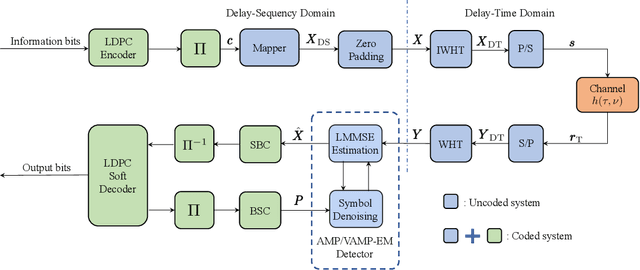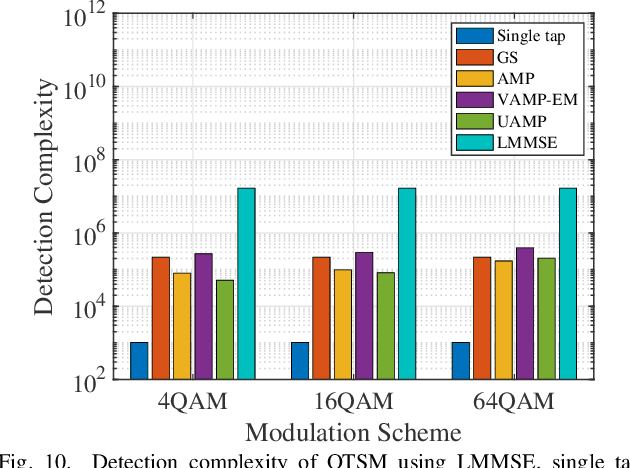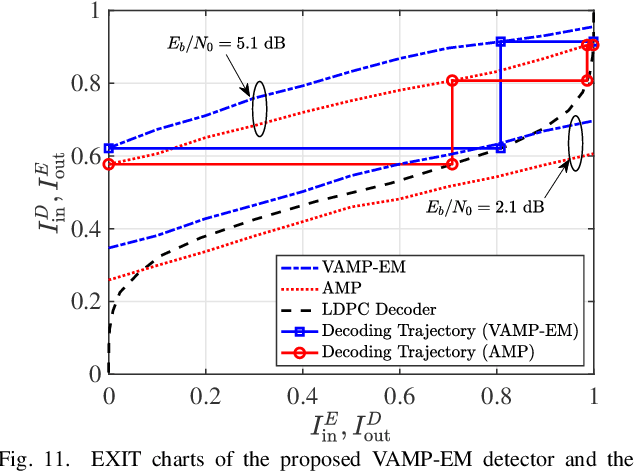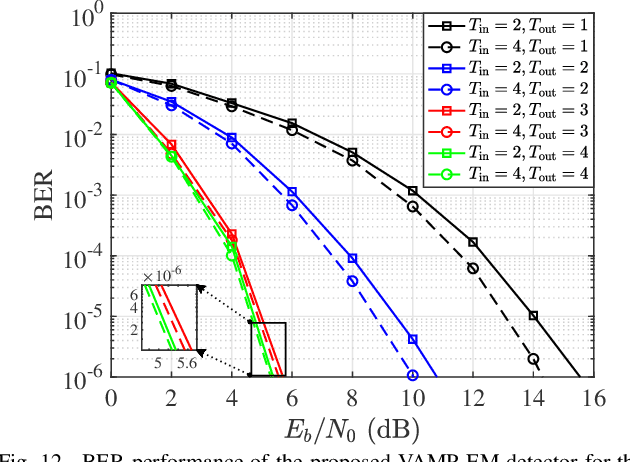Yonghong Zeng
A Deep Learning based Signal Dimension Estimator with Single Snapshot Signal in Phased Array Radar Application
Aug 14, 2025Abstract:Signal dimension, defined here as the number of copies with different delays or angular shifts, is a prerequisite for many high-resolution delay estimation and direction-finding algorithms in sensing and communication systems. Thus, correctly estimating signal dimension itself becomes crucial. In this paper, we present a deep learning-based signal dimension estimator (DLSDE) with single-snapshot observation in the example application of phased array radar. Unlike traditional model-based and existing deep learning-based signal dimension estimators relying on eigen-decomposition and information criterion, to which multiple data snapshots would be needed, the proposed DLSDE uses two-dimensional convolutional neural network (2D-CNN) to automatically develop features corresponding to the dimension of the received signal. Our study shows that DLSDE significantly outperforms traditional methods in terms of the successful detection rate and resolution. In a phased array radar with 32 antenna elements, DLSDE improves detection Signal to Noise Ratio (SNR) by >15dB and resolution by >1{\deg}. This makes the proposed method suitable for distinguishing multiple signals that are spatially correlated or have small angular separation. More importantly, our solution operates with a single snapshot signal, which is incompatible with other existing deep learning-based methods.
Active RIS Enhanced Spectrum Sensing for Cognitive Radio Networks
Nov 28, 2023



Abstract:In opportunistic cognitive radio networks, when the primary signal is very weak compared to the background noise, the secondary user requires long sensing time to achieve a reliable spectrum sensing performance, leading to little remaining time for the secondary transmission. To tackle this issue, we propose an active reconfigurable intelligent surface (RIS) assisted spectrum sensing system, where the received signal strength from the interested primary user can be enhanced and underlying interference within the background noise can be mitigated as well. In comparison with the passive RIS, the active RIS can not only adapt the phase shift of each reflecting element but also amplify the incident signals. Notably, we study the reflecting coefficient matrix (RCM) optimization problem to improve the detection probability given a maximum tolerable false alarm probability and limited sensing time. Then, we show that the formulated problem can be equivalently transformed to a weighted mean square error minimization problem using the principle of the well-known weighted minimum mean square error (WMMSE) algorithm, and an iterative optimization approach is proposed to obtain the optimal RCM. In addition, to fairly compare passive RIS and active RIS, we study the required power budget of the RIS to achieve a target detection probability under a special case where the direct links are neglected and the RIS-related channels are line-of-sight. Via extensive simulations, the effectiveness of the WMMSE-based RCM optimization approach is demonstrated. Furthermore, the results reveal that the active RIS can outperform the passive RIS when the underlying interference within the background noise is relatively weak, whereas the passive RIS performs better in strong interference scenarios because the same power budget can support a vast number of passive reflecting elements for interference mitigation.
Performance Analysis and Approximate Message Passing Detection of Orthogonal Time Sequency Multiplexing Modulation
Jul 06, 2023



Abstract:In orthogonal time sequency multiplexing (OTSM) modulation, the information symbols are conveyed in the delay-sequency domain upon exploiting the inverse Walsh Hadamard transform (IWHT). It has been shown that OTSM is capable of attaining a bit error ratio (BER) similar to that of orthogonal time-frequency space (OTFS) modulation at a lower complexity, since the saving of multiplication operations in the IWHT. Hence we provide its BER performance analysis and characterize its detection complexity. We commence by deriving its generalized input-output relationship and its unconditional pairwise error probability (UPEP). Then, its BER upper bound is derived in closed form under both ideal and imperfect channel estimation conditions, which is shown to be tight at moderate to high signal-to-noise ratios (SNRs). Moreover, a novel approximate message passing (AMP) aided OTSM detection framework is proposed. Specifically, to circumvent the high residual BER of the conventional AMP detector, we proposed a vector AMP-based expectation-maximization (VAMP-EM) detector for performing joint data detection and noise variance estimation. The variance auto-tuning algorithm based on the EM algorithm is designed for the VAMP-EM detector to further improve the convergence performance. The simulation results illustrate that the VAMP-EM detector is capable of striking an attractive BER vs. complexity trade-off than the state-of-the-art schemes as well as providing a better convergence. Finally, we propose AMP and VAMP-EM turbo receivers for low-density parity-check (LDPC)-coded OTSM systems. It is demonstrated that our proposed VAMP-EM turbo receiver is capable of providing both BER and convergence performance improvements over the conventional AMP solution.
 Add to Chrome
Add to Chrome Add to Firefox
Add to Firefox Add to Edge
Add to Edge